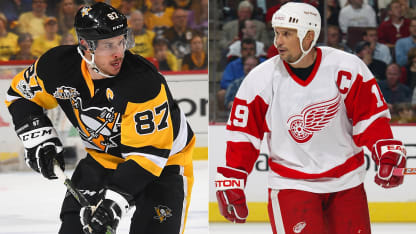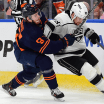Sidney Crosby and Evgeni Malkin each seem to be a safe bet to one day be enshrined, but no other player on the Penguins roster appears likely to get the call from the Hall at this point.
RELATED: [Penguins focused on next game rather than making history | Penguins vs. Predators key statistics]
How do today's Penguins compare in other regards? According to the numbers, they qualify as the Red Wings' equal offensively and in goal, but their defensive play may be a stride behind.
Statistically, there are some challenges to overcome when comparing teams from one era to another. There were 26 teams in 1997-98, and the Predators weren't one of them. It was before the two-referee system, points for overtime losses, the shootout, and the salary cap were introduced. The center line still counted for two-line passes, and goalies were allowed to play the puck anywhere behind the net.
In most cases, the differences between the eras tended to cancel each other out in the final numbers. For example, there were fewer shots per game in 1997-98, but save percentages were also lower, resulting in roughly the same number of goals per game. Similarly, there were more power-play opportunities per game, but percentages were also slightly lower, resulting in roughly the same number of power-play goals.
Even with these differences in mind, it remains fair to compare these Penguins to those Red Wings.
In terms of record, the Penguins are 28-15 in the 2016 and 2017 Stanley Cup Playoffs, meaning they already have lost more games than the Red Wings, who were 32-10 in the 1997 and 1998 playoffs.
The Penguins have the edge in the regular season, with a 98-47-19 record in 2015-16 and 2016-17 combined, which ranks second to the Capitals (111-37-16). That results in 215 points, which is 18 more than the Red Wings, who had a record of 82-49 with 33 ties in 1996-97 and 1997-98 combined, which ranked fifth in that span.
In terms of playoff scoring, the Penguins have been led by Malkin, who has 42 points (13 goals, 29 assists) in 42 games over the past two seasons. He is followed by Phil Kessel with 41 points (17 goals, 24 assists) in 43 games, and Crosby with 39 points (13 goals, 26 assists) in 42 games.


















